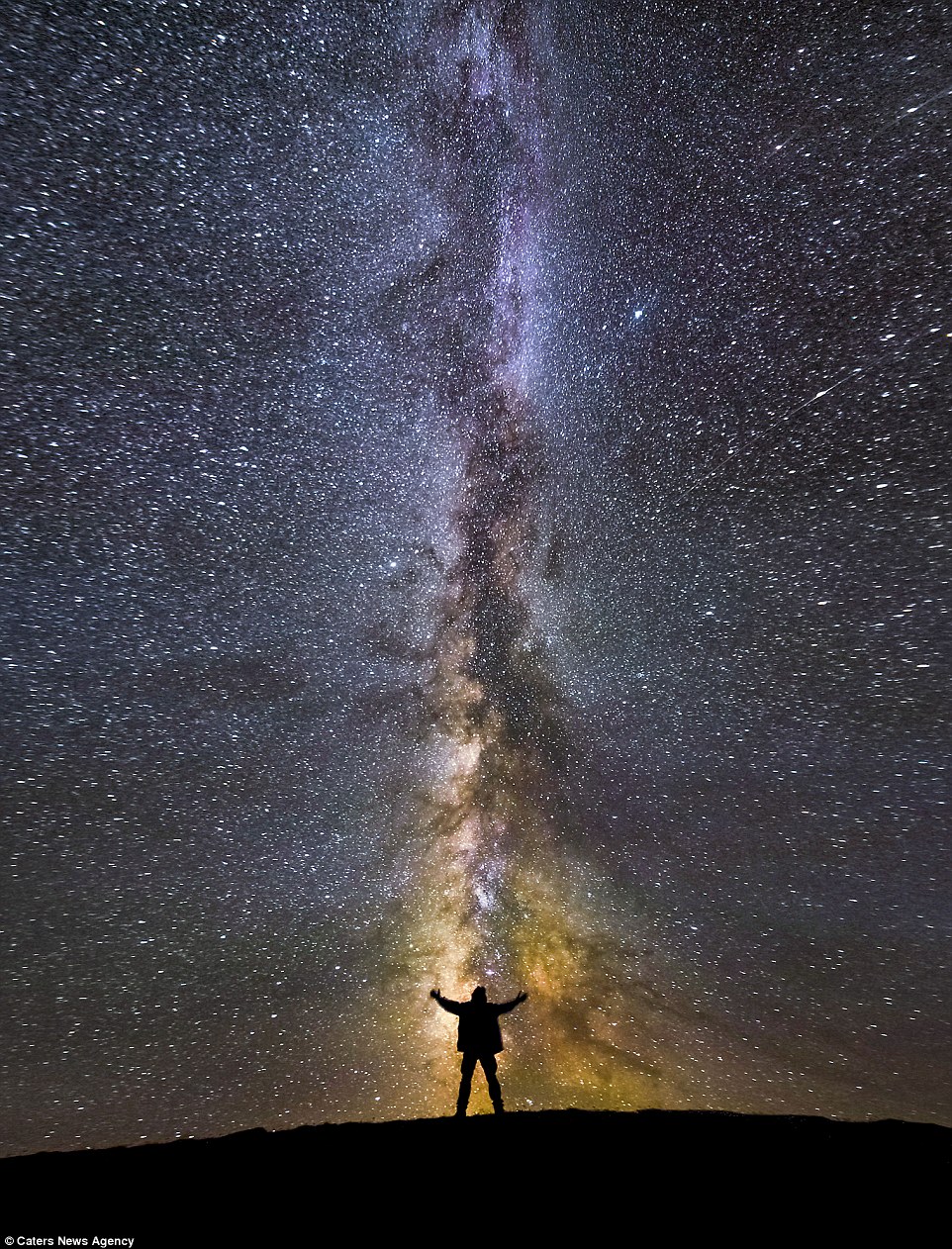If The Sun was A Grain of Sand. . .
We live in a spectacular universe, one that many people have yet to fully recognize.
Have you ever looked at something big, like, you can't fit the whole thing in you eye-line big? If so, you may have felt a sudden sense of compression, like you feel yourself shrinking in its presence. Maybe a giant tower with morning fog preceding its peak, or perhaps you saw a mountain where clouds block the summit.
Let's imagine for a moment now, that instead of a Tower, or a tectonic summit right in front of you, what you were seeing was farther away than you could ever imagine. To the point of visually being almost tiny. But somewhere inside you just sort of know that what you see isn't quite the whole picture, you don't see the distance, you feel the distance. This is the almost unreal feeling you'll experience upon witnessing just about anything that lies in the reaches of space. We see it all the time. But what precisely is it that you see, how big is it, or how distant?
Well to answer that I'll just say. . . I can't give you an answer, or at least not one you can comprehend. We'd be dealing with numbers and figures so mind numbing, so extreme you just don't fully appreciate them. But fortunately, there is a better way. And it all starts with two things we've all seen at least a few times; Sand, and the Sun.
Start by just imagining in your head, the entire sun, (Yes the same one that's over a hundred time wider than earth), being as small as a grain of sand, and not some North Carolina "Small Rocks" sand, more like New Jersey or Hawaii type sand. About 1 millimeter across. At this scale, in which the sun is shrunken down drastically to something you can fit thousands of in your hand, the stunning distances and sizes the cosmos has to offer can be better understood. Shrinking one light-year, ( the distance light travels in one year), down to just one mile.

What's so stunning about this conversion is that it really lets you grasp the scale we're dealing with here. Say you're some galactic giant looking at the sand-sized sun, where's the next closest one? Well as it turns out, you'd have to make the trek of 4.3 miles to get to our next stellar neighbor, Proxima Centuari.
There's many things to input into this fun scale of coincidence, for instance, The Great Orion nebula would lie around 1340 miles away from our sun, the distance from Dallas to LA. Or the Nebula itself, is 23 light years across in reality, so on this scale it would be seen as 23 miles wide. All while the sun is but a grain of sand.

Above: Beautiful Astrophotography of the Orion nebula By Christine Ir
I could go on and on and on about all the various applications for this scaling method, such as how our very own galaxy would tower over any of these other examples being anywhere as estimates show between 100,000 or 150,000 miles wide as a disk and 1000 miles thick. Bear in mind, that's when we scale it down so the sun is a grain of sand. That's a grain of sand in something the size of the rings of Saturn.
But for now we can stop and let everything settle in, perhaps try researching some other Cosmic entities and see how they stack up, how far away is something, how wide is something, etc.

Picture origins:
http://www.dailymail.co.uk/travel/travel_news/article-3268349/Now-S-astronomical-jaw-dropping-photographs-Milky-Way-ve-never-seen-before.html
http://www.skyandtelescope.com/online-gallery/orion-nebula-m42-5/
Info Sources:
http://oneminuteastronomer.com/5001/size-of-milky-way/
"Astronomica" by Patrick Moore and Fred Watson
There are two things that have always had my interest, dating back as far as my memory reaches, space (specifically its vastness) and philosophy...well, actually three -- girls took the third seat until I turned twelve, but that goes without saying :)
It's truly inconceivable how large our universe is, what with its hundreds of billions of stars per galaxy, of which our sun is only average sized (if not on the lower end), and over a billion galaxies with hundreds, thousands and even millions of light-years separating some of them.
It's truly captivating isn't it.
Leaving room for both science and imagination alike.
This post has been ranked within the top 80 most undervalued posts in the first half of Mar 08. We estimate that this post is undervalued by $3.10 as compared to a scenario in which every voter had an equal say.
See the full rankings and details in The Daily Tribune: Mar 08 - Part I. You can also read about some of our methodology, data analysis and technical details in our initial post.
If you are the author and would prefer not to receive these comments, simply reply "Stop" to this comment.
Stop
We apologize for any inconvenience. You will no longer receive these comments on your posts.